The must-know pieces of information for purchasing any man's watch:
1. The Movement
The “movement” of a watch is the mechanism by which it tells time.
Quartz movements are the most common and usually the most affordable kind of mechanism. A tiny sliver of synthetic quartz inside the watch vibrates as electric charge passes through it. The watch measures the speed of the vibration and uses it to keep track of the time. These require batteries to produce the electric charge.
Automatic or mechanical movements are precision-engineered pieces that use very carefully measured springs and gears to keep the time. Some require periodic winding with a crown (a small knob on the side or top of the watch), while others come lifetime guaranteed and should only be re-wound by the maker.
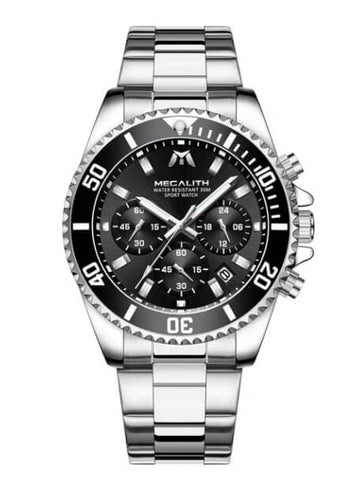
Those two categories account for basically all wristwatches. However, a few other words are used to describe specific subsets of these methods:
Kinetic watches are quartz movement watches that rely on the constant motion of the wearer's arms to generate electricity rather than a battery. The mechanism is more complicated, making the watch more expensive, and it may run down if it is not worn or moved about regularly. So long as they are worn regularly, however, kinetic watches should never stop running.
Solar movements, like kinetic, are quartz movements that rely on a non-battery power source, in this case a solar cell in the face of the watch. Some are quite powerful, needing only a few minutes of exposure to the sun to last for days.
Swiss movements refers to watches produced in Switzerland under very exacting standards. They can be either quartz or automatic movements; quartz movements may sometimes specify “Swiss Quartz” but do not have to. “Swiss Case” means that the case was produced in Switzerland but the movement was not.
Obviously, some of these styles will be more suited to a man's lifestyle than others. Many purists prefer the artistry of an automatic watch, particularly one that requires no winding. At the same time, an active man can get the same maintenance-free convenience at a fraction of the cost with a kinetic or solar quartz movement. And a man who doesn't mind occasionally changing batteries can have the most affordable option of all in a traditional quartz movement watch.
2. The Band
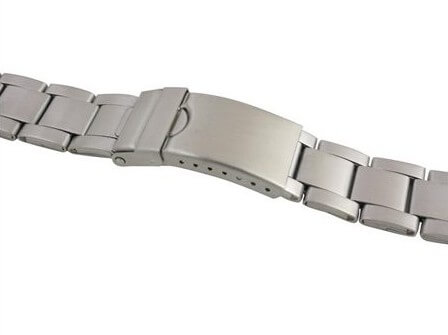
stainless steel watch bandMost people will notice the color and style of your watch band before any of its other details. A watch designed to take interchangeable bands will be a much better value than one with a single, permanently-attached band — you can effectively have multiple watches for a fraction of the cost by swapping bands in and out with the same face.
Dive-style bands are made from interlocking links of metal, usually stainless steel. They're a good default for most outfits. As long as the links are simple and solid and there aren't a bunch of needless gadgets on the face, they'll hold up with a suit as well as with casual outfits. You don't have to worry about the band matching your belt and shoes this way, but you do need to make sure any other metal you're wearing is in the same color family (i.e., gold, silver, etc.).
Black leather bands are the best option for full business dress. They're simple, restrained, and match the black shoes and belt that you should be wearing.
Brown leather bands look good with casual outfits, particularly if you're wearing other jewelry and a metal band would be too much. It doesn't have to be a perfect match for your shoes and belt — as long as they're all some kind of brown you should be fine.
Rubber and plastic bands aren't automatic no-nos, but they should be reserved for sports and dive watches. Most watches that can take interchangeable leather bands can also take rubber, so if you get a sturdy one you can have your outdoors watch and your dress watch all in one.
Note that the metal bracelet family of bands usually adjusts by adding or removing links, while leather bands are usually a fixed length with multiple holes to slip a buckle through. Neither is inherently better, but most men find that they prefer one or the other.
3. The Face
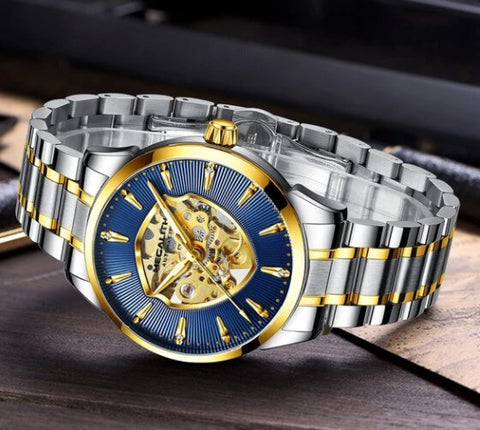
The other major visible component is the face. This is the flat surface where the hands or time display are located. It can be anything from a gray screen with digital numbers to a detailed chronograph with hands for the day, month, and year as well as hours, minutes, and seconds. Major characteristics that affect the style of the face include:
The numbers – A digital display is aggressively modern, while Roman numerals are deliberately anachronistic. Arabic numerals fall somewhere in between, and can come in just about any font you can think of.
The hands – We're accustomed to the usual circular display with two or three hands, but watches can get much more artistic than that. It's common to see watch faces with multiple circular dials, each with their own hand, or with a semi-circular arc of numbers like a speedometer rather than the traditional clock face.
The color – White, black, and gray are simple and easy to match. Brown and blue are more colorful, and may work better with some leathers. Bright colors make the watch more casual but also more unique. For business dress, stick to black, white, metal tones, or deep navy blue.
4. The Bezel
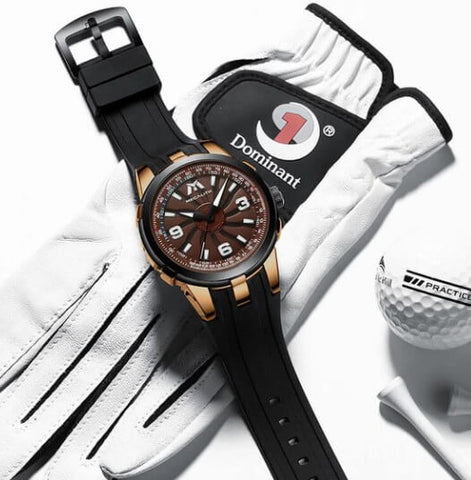
The bezel is the metal ring that surrounds the watch face and holds it in place. Many can rotate to function as a timer or stopwatch. You want to stick to a fairly small, simple bezel in most cases, especially in a watch with a metal band — too much metal starts to look gaudy.
5. The Crystal
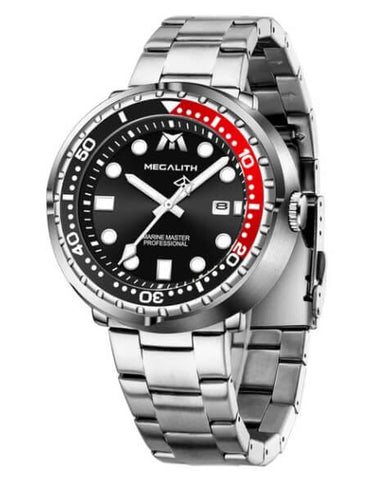
The crystal is the piece of clear material that protects the watch face.
Sapphire crystals (made with synthetic clear sapphire) are the hardest and best watch crystals. They're very difficult to scratch with anything but a hard-edged gemstone (be careful around women with diamond rings, however). They tend to be quite expensive.
Mineral glass crystals are the most common option for men who want to balance affordability with durability. It offers decent scratch resistance, though steel can usually scratch it, but is the most prone to shattering on impact.
Plexiglass crystals are cheap, simple, and soft. They cannot be marketed as “scratch-resistant.”
6. Water Resistance
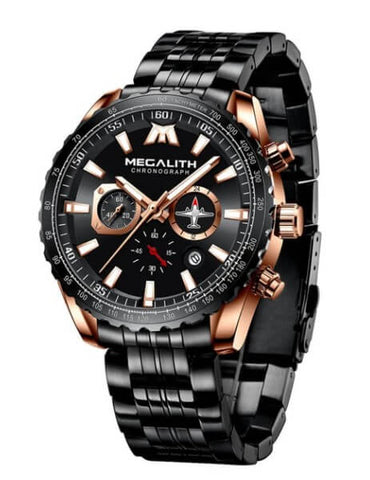
Watch makers make a selling point out of this, despite the fact that most watch-wearers aren't regular divers. The number tells you how deep the watch could theoretically go without breaking, but the measurement is always an estimate based on best-case scenarios.
In general, men who don't plan on doing anything more extreme than getting rained on don't need more than a 50-meter rating. At that point you can also take it in the bath or swimming pool if you want, though both heat and chlorine are hard on the gaskets that waterproof the watch.
If you're a regular swimmer or you plan on doing any kind of diving you'll want a higher rating. 200 meters is usually sufficient for recreational divers, and if you need a watch more serious than that you aren't buying a fashion piece!
You may interested in:
A Foolproof Guide To Quartz Watches
How To Buy A Men's Watch In 2020
What Size Watch Band Do I Need? Watch Band Measuring Guide


